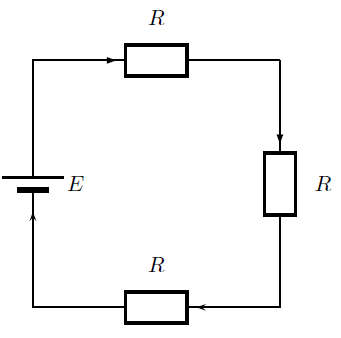| << Chapter < Page | Chapter >> Page > |
We have been talking about moving charge. But how much charge is moving, and how fast is it moving? The concept that represents this information is called current . Current allows us to quantify the movement of charge.
When we talk about current we talk about how much charge moves past a fixed point in circuit in one second. Think of charges being pushed around the circuit by the battery; there are charges in the wires but unless there is a battery they won't move. When one charge moves, the charges next to it also move. They keep their spacing as if you had a tube of marbles like in this picture.

If you push one marble into the tube then one must come out the other side. If you look at any point in the tube and push one marble into the tube, one marble will move past the point you are looking at. This is similar to charges in the wires of a circuit.
If one charge moves then they all move and the same number move at every point in the circuit. This is due to the conservation of charge.
Now that we've thought about moving charges and visualised what is happening we need to get back to quantifying moving charge. We've already said that we call moving charge current but we define it precisely as follows:
Current is the rate of flow of charge, i.e. the rate at which charges move past a fixed point in a circuit. We use the symbol I to show current and it is measured in amperes (A). One ampere is one coulomb of charge moving in one second. The relationship between current, charge and time is given by:
When current flows in a circuit we show this on a diagram by adding arrows. The arrows show the direction of flow in the circuit. By convention we say that charge flows from the positive end ( or terminal) of a battery, through the circuit, and back to the negative end ( or terminal) of the battery. This is shown in the diagram below. We measure the current with an instrument called an ammeter.

The arrows in this picture show you the direction that charge will flow in the circuit. Note that the arrows point from the positive end of the battery, through the circuit, towards the negative end of the battery.
Using the relationship between current, charge, and time, calculate the current in a circuit which has of charge passing a point every second.
Given:
Asked for: I

Notification Switch
Would you like to follow the 'Siyavula textbooks: grade 10 physical science [caps]' conversation and receive update notifications?